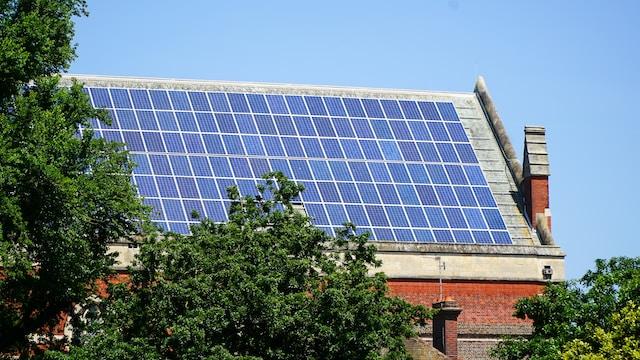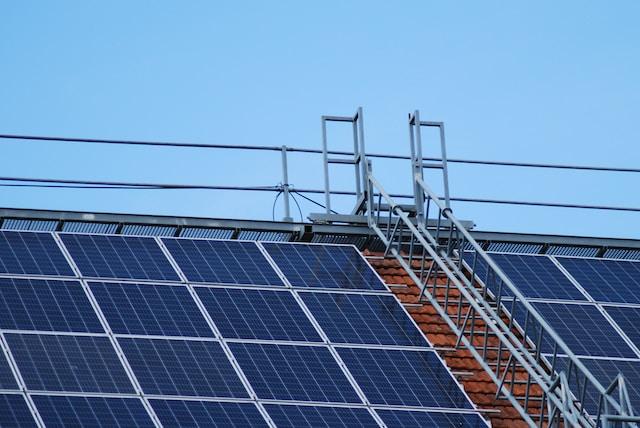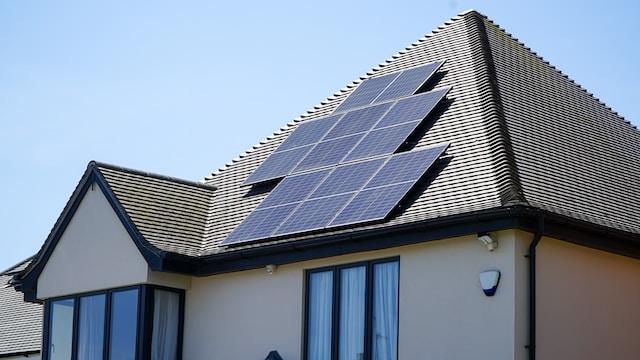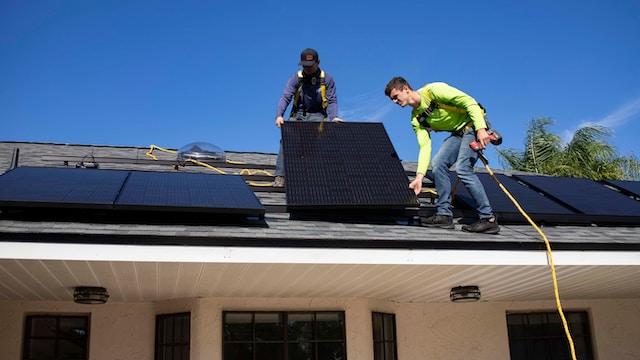
Factors Affecting Solar Panel Performance: Understanding the Impact on Solar Power Systems
Introduction
Solar panel technology has become increasingly popular as more people recognize the value of harnessing clean, renewable energy from the sun. With the growing demand for solar energy, understanding and maximizing solar panel performance is essential to ensure efficient energy production and long-term cost savings. This article aims to discuss the various factors that affect solar panel performance, providing valuable insights for those looking to optimize their solar energy systems. By exploring aspects such as environmental conditions, installation techniques, panel quality, maintenance, and aging, readers can gain a comprehensive understanding of how to make the most of their solar investment. As solar energy continues to play a crucial role in the global transition towards sustainability, maximizing solar panel performance becomes increasingly important for both individual users and the larger community.
Environmental Factors
Environmental factors play a significant role in the performance of solar panels, with sunlight exposure, temperature, and geographical location all contributing to the overall efficiency of a solar energy system. Understanding these factors can help solar panel owners optimize their installations to harness maximum energy from the sun. Sunlight exposure and intensity directly impact the amount of energy a solar panel can produce. Solar panels depend on sunlight to generate electricity, and therefore, the more sunlight they receive, the more energy they produce. Regions with longer hours of sunlight or higher sun intensity will naturally see better solar panel performance. Tracking systems can be employed to keep panels optimally oriented toward the sun, further enhancing energy production. Temperature can also have a considerable effect on solar panel efficiency. While it may seem counterintuitive, solar panels often perform better at lower temperatures. As the temperature increases, the efficiency of solar cells tends to decrease due to increased resistance in the semiconductor material. This means that solar panels installed in cooler climates or those with effective cooling systems may produce more energy per unit of sunlight than those in hotter areas. It's essential to consider temperature coefficients when selecting solar panels, as they provide insights into how the panel will perform under varying temperature conditions. Geographical location and climate also influence solar panel performance. Factors such as cloud cover, precipitation, and humidity can impact the amount of sunlight that reaches solar panels, which in turn affects energy production. Regions with consistent sunlight and minimal cloud cover tend to experience better solar panel performance than areas with frequent overcast skies or significant seasonal variations in sunlight. By understanding the environmental factors that influence solar panel performance, solar energy users can optimize their systems to ensure maximum energy production and cost savings.
Solar Panel Orientation and Installation
Solar panel orientation and installation play a crucial role in maximizing energy production and overall system performance. Properly positioning solar panels, ensuring correct mounting, and minimizing shading can significantly impact the efficiency and longevity of a solar energy system. The angle and positioning of solar panels directly affect the amount of sunlight they receive, and therefore, the energy they generate. Ideally, solar panels should be oriented toward the sun's path for optimal sunlight exposure. In the Northern Hemisphere, panels should typically face south, while in the Southern Hemisphere, they should face north. The tilt angle should be adjusted according to the latitude of the installation site to capture the most sunlight throughout the year. Some systems employ tracking mechanisms that follow the sun's movement throughout the day, further enhancing energy production. Proper mounting and installation techniques are essential for both optimal performance and system longevity. Solar panels should be mounted securely to the roof or ground using sturdy, weather-resistant materials. Proper spacing between panels and the mounting surface helps facilitate airflow, preventing overheating and maintaining panel efficiency. Additionally, ensuring that the system is properly grounded and wired will reduce the risk of electrical issues and enhance overall performance. Shading can significantly impact solar panel performance, as even partial shading can lead to reduced energy output. Objects such as trees, buildings, or other structures can cast shadows on solar panels, diminishing their efficiency. When planning a solar panel installation, it's crucial to consider potential shading factors and aim to minimize their impact by strategically positioning the panels. In summary, optimizing solar panel orientation and installation is a vital aspect of maximizing system performance, ensuring that users can harness the full potential of solar energy for their homes or businesses.
Solar Panel Quality and Type
Solar panel quality and type are essential factors to consider when seeking to optimize solar energy system performance. The market offers various solar panel technologies, including monocrystalline, polycrystalline, and thin-film solar panels, each with its unique characteristics, efficiency ratings, and performance capabilities. Understanding the differences between these types can help users select the most suitable solar panel option for their specific needs. Monocrystalline solar panels, made from single-crystal silicon, are known for their high efficiency and sleek appearance. The uniform composition of the silicon enables electrons to flow more easily, resulting in better energy conversion. Monocrystalline panels are typically more expensive than other types but can generate more power per square foot, making them ideal for space-constrained installations. Polycrystalline solar panels, on the other hand, consist of multiple silicon crystal fragments melted together. While they are less efficient than monocrystalline panels, they are generally more affordable, making them a popular choice for residential installations with ample space. Polycrystalline panels have a characteristic blue hue and may be slightly less aesthetically pleasing compared to their monocrystalline counterparts. Thin-film solar panels are made by depositing layers of photovoltaic material onto a substrate. While thin-film panels offer a lightweight, flexible, and aesthetically pleasing solution, they have lower efficiency ratings than both monocrystalline and polycrystalline panels. However, thin-film panels can perform better in low light or high-temperature conditions, making them suitable for certain applications. Efficiency ratings and performance can vary widely among solar panel models, even within the same technology type. Selecting high-quality panels from reputable manufacturers can result in better long-term performance and system reliability. The role of solar cell technology in panel performance is crucial, as advances in this area continue to improve efficiency, reduce costs, and expand the capabilities of solar energy systems.
System Maintenance and Cleanliness
System maintenance and cleanliness are critical factors in ensuring optimal solar panel performance and preserving the longevity of your solar energy system. Dirt, debris, and other environmental factors can significantly impact the efficiency of solar panels, making regular maintenance and cleaning essential for maximizing energy production. Dirt, dust, and debris can accumulate on solar panel surfaces, obstructing sunlight and reducing the amount of light that reaches the solar cells. This accumulation can significantly impact the energy production of your solar panels, with studies suggesting that dirty solar panels can lose up to 25% of their efficiency. Pollen, bird droppings, and other pollutants can also contribute to this reduction in performance. Regular maintenance and cleaning are vital to ensuring your solar panels operate at peak efficiency. Scheduling routine inspections can help identify potential issues early on, preventing costly repairs or system failures in the future. Cleaning your solar panels periodically can help maintain optimal performance by removing dirt, dust, and debris that may obstruct sunlight. How often you need to clean your solar panels depends on factors such as local climate, pollution levels, and the angle of your panels. To maintain solar panel efficiency, follow these tips:
Inspect your solar panels regularly to identify any signs of dirt accumulation, damage, or shading.
Clean your solar panels gently with water and a soft brush or cloth, avoiding abrasive materials that could scratch the panel surface.
If possible, schedule cleanings during cooler parts of the day, as rapid temperature changes can cause thermal stress on the panels.
Consult your solar panel manufacturer or a solar professional for specific cleaning recommendations or if you're unsure about how to properly clean your panels.
By keeping your solar panels clean and well-maintained, you can ensure that your solar energy system operates at peak performance, maximizing both energy production and cost savings.
Aging and Degradation of Solar Panels
As with any technology, solar panels experience aging and degradation over time, which can impact their performance and overall efficiency. Understanding the factors contributing to solar panel degradation, considering lifespan and warranty implications, and employing strategies to prolong solar panel performance are crucial aspects of maximizing your solar energy investment. Performance degradation occurs gradually as solar panels age, leading to reduced energy production over time. Factors contributing to this degradation include temperature fluctuations, exposure to UV radiation, and mechanical stress. On average, solar panels lose about 0.5% to 1% of their efficiency per year, although this rate can vary depending on the panel type and quality. Lifespan and warranty considerations play an essential role in selecting solar panels for your system. High-quality solar panels typically have a lifespan of 25 to 30 years or more, and most manufacturers offer performance warranties to guarantee a specific level of efficiency throughout the warranty period. When choosing solar panels, it's important to consider not only the panel's efficiency at the time of purchase but also its expected performance over its lifespan. To prolong solar panel performance and lifespan, implement the following strategies:
Choose high-quality panels from reputable manufacturers with a track record of durability and reliability.
Ensure proper installation and mounting, minimizing mechanical stress and promoting adequate airflow to prevent overheating.
Conduct regular maintenance and cleaning to maintain peak efficiency and identify potential issues early on.
Protect your solar panels from harsh weather conditions and physical damage by implementing measures such as protective coatings or barriers.
By understanding the factors affecting solar panel aging and degradation, and by implementing strategies to mitigate these effects, you can maximize the performance and lifespan of your solar energy system, ensuring long-term savings and sustainable energy production.
Conclusion
In conclusion, multiple factors significantly impact solar panel performance, including environmental conditions, panel orientation and installation, solar panel quality and type, system maintenance and cleanliness, and aging and degradation. Understanding and addressing these factors is crucial to ensuring optimal solar energy production and maximizing the benefits of your solar investment. By selecting the right solar panel type and quality for your needs, ensuring proper installation, conducting regular maintenance and cleaning, and implementing strategies to prolong panel performance and lifespan, you can harness the full potential of solar energy. As you embark on your solar journey, considering these factors will help you make informed decisions regarding the selection and maintenance of your solar panel system. We encourage readers to continue researching and consulting with solar professionals to optimize solar panel performance, ultimately contributing to a more sustainable and eco-friendly future through the widespread adoption of solar energy.
Apr 3, 2023
Share:
Fresh off the Press
Continue reading
Newsletter
Your journey towards a sustainable lifestyle starts here!
Join our newsletter for the latest on solar panels and clean energy breakthroughs.






